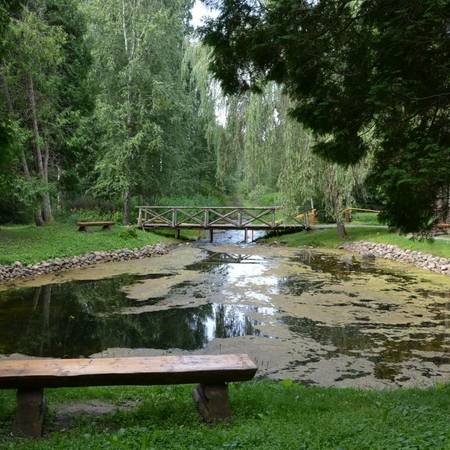Likėnai Spring (Smardone) - hydrogeological natural object, spring of karst origin, formed after the collapse of a sinkhole. The diameter of the sinkhole is constantly changing and has increased from 15 meters to 18 meters. The banks of the spring are loamy, covered with turf. The flow of the spring is held back by boulders of igneous and metamorphic origin and pieces of dolomite with a diameter of up to 0.6 meters which were thrown in a section approximately 7 meters long and up to 2 meters wide. The stream rushes here, stumbling behind the stone barrier and breaking through the cracks between the stones. Through such a stone barrier, you can also cross the streambed of the spring without getting your feet wet. It was the most energetic spring in Lithuania. However, after the land reclamation works, the power decreased. The spring is the beginning of the Smardone stream. Due to the bitter taste (bitter to drink) and the smell of hydrogen sulphide gas (rotten egg), the residents drew attention to the source of Smardonė a long time ago, and the specific stench logically dictated the selection of the corresponding name. Water with low total mineralization, cold (temperature 7.6 °C), weakly alkaline (pH = 7.4), Eh = -29 mV, reducing environment (rH = 14). The first studies of the composition of spring water were carried out and the results were published in 1816 by Theodoras Grotthuss - a pioneer of the science of electrochemistry, who was born and lived in the Gedučiai manor of the Pakruojis district. The spring water is suitable for those undergoing treatment to sip, rub their eyes, and simply soak sore hands and feet in the spring. Perhaps the first information about the use of the Smardone spring as having healing properties comes from written documents from 1587. In 1938, after the opening of the Likėnai sanatorium, before there were any wells, mineral water was taken from the springs, and therefore also from the great spring of Smardone, which was used for baths and for diluting the healing mud in the treatment of various diseases.
.jpg)
+1



Reviews